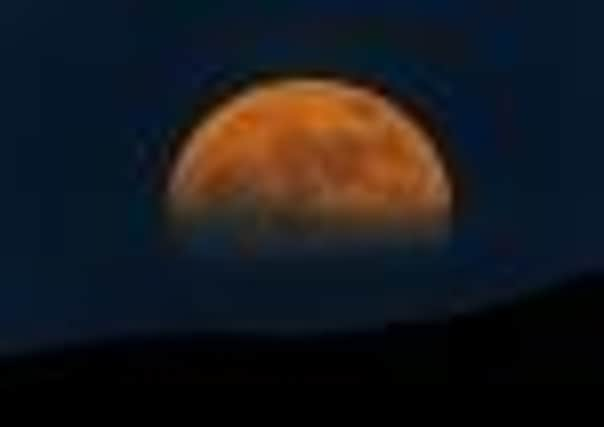‘Super Moon’ delights photographers the world over


In the end, however, the appearance of a “Super Moon” at the weekend brought about only hordes of photographers, gazing into the night sky from vantage points all over the world.
The phenomenon enraptured skywatchers from Edinburgh to El Salvador, as the celestial body loomed large and shone far brighter than normal into the early hours yesterday.
Advertisement
Hide AdAdvertisement
Hide AdAccording to Nasa, the Moon seemed especially big and bright because it had reached its closest spot to Earth at the same time as it was in its full phase.
The lunar event, known as a “perigee moon”, meant it appeared about 14 per cent larger and 30 per cent brighter than when it is farthest from the planet, according to the United States’ space agency.
The event inspired photographers around the world, including Andy O’Brien, the picture editor of The Scotsman, who took to the summit of Calton Hill in Edinburgh to capture the Moon rising from behind Arthur’s Seat at around 9:30pm on Saturday.
“I had researched where and when the Moon was going to come up over the horizon,” he said. “Fortunately, the timing was just about spot-on. It was quite a challenging shot. Even with a tripod, the wind made it difficult, and there was a bit of cloud around as well.
“I’m quite pleased with what I got,” he added.
Dr Robert Massey, of the Royal Astronomical Society, said that while most people will have noticed the Moon’s increased size, fewer will have been aware of its brightness.
“The eye is so good at compensating for changes in brightness that you simply don’t notice so much,” he said.
When the Moon appeared at its largest, it was 221,457 miles away, compared with its average distance from Earth of 238,606 miles.
The Moon’s distance from Earth varies because it follows an elliptical orbit.
Advertisement
Hide AdAdvertisement
Hide AdNasa said the large Moon so enraptured skywatchers, it even stole the limelight from a meteor shower, which was caused by Halley’s Comet.
The comet’s debris trail – known as the “Eta Aquarid meteor shower” – peaked in the sky over the weekend, but the glare of the unusually large Moon washed out all but the brightest fireballs.
The Moon appeared at its best in British skies at around 4:30am yesterday.